
Emerging wine regions need winemakers who have the creative vision to push through boundaries and challenge conventions. In the Finger Lakes, Nancy Irelan and Mike Schnelle of Red Tail Ridge have challenged mainstream thinking with their plantings of Teroldego and other nontraditional grapes such as Dornfelder. And the experiments are showing great results. Eric Asimov in the New York Times describes her wines: "The teroldego is superb, spicy, pretty and fresh. Surprisingly, she also makes an even better sparkling teroldego, like a good lambrusco."
Grape Collective met with Nancy Irelan to discuss her journey from Vice President of Viticulture and Enology R&D at Gallo in California to owner of Red Tail Ridge.
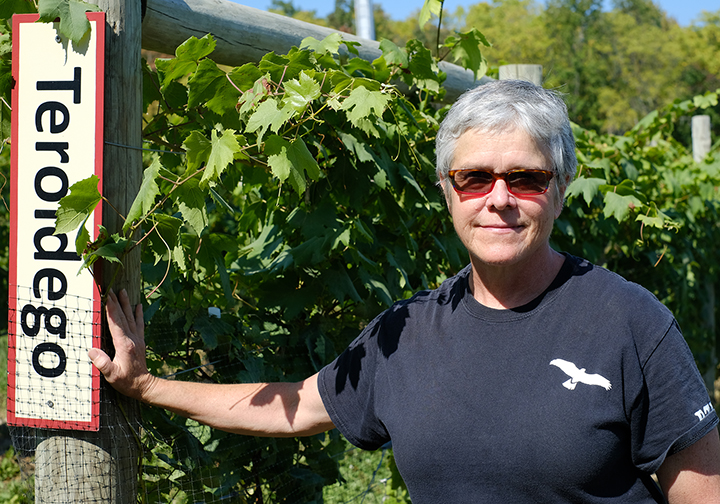 Christopher Barnes: Nancy, tell us about Red Tail Ridge. How did you launch this estate?
Christopher Barnes: Nancy, tell us about Red Tail Ridge. How did you launch this estate?
Nancy Irelan: My husband and I established Red Tail Ridge in 2005, after purchasing a little over 34 acres of undeveloped land in 2004. It took us three years to plant the vineyards, and now we have just over 20 planted acres. But the story behind locating and developing this property is an interesting one. It began in the '90s when I was working at the Gallo winery in California. I travelled here frequently for research projects with Cornell University, and for meetings both with Cornell and the USDA.
In the early '90s things were still a little bit rough around here. But you could sense the potential. As I continued returning, I noticed that more and more people were focusing on quality; selecting the proper varieties and endeavoring to grow them properly.
Towards the end of the '90s, you could truly feel and taste the potential in the wines that were being produced. Granted, there was a little bit of a variation from the different producers, but over time everyone had substantially raised the bar. So that's how we ended up focusing on this particular area.
I should add that although I worked in the wine industry in California, my husband and I really wanted to have our own project. We researched a number of areas, as well as different states in the US, but the Finger Lakes appealed to us because we could see its potential. It was still a very young area with a lot of opportunity to get in on the ground floor and become a part of the growth and the future of the area.
Nancy, prior to establishing Red Tail Ridge, you worked for a very big organization in the wine business, and now you're working for yourself. What has that been like?
Yes, I worked for Gallo in California for 12 years, basically developing a research and development program for the winery. I was hired to focus on the future of the wine industry and to develop an approach for the new generations that would follow and eventually take control. I started in 1994, when Gallo had just decided that they wanted to begin focusing on their quality programs in the North Coast area. They had just started building out Gallo of Sonoma, and were looking at other projects. I was brought in to help them achieve their quality goals, but shortly after joining them, it became clear to me that there were other opportunities to help them across all of their properties. So pretty quickly I started working on projects all over the winery, at different growing regions. And while I was hired to plan and develop their future, I realized that they also needed some help right away. Although I started working on innovative projects, within a very short period of time, I became a troubleshooter.
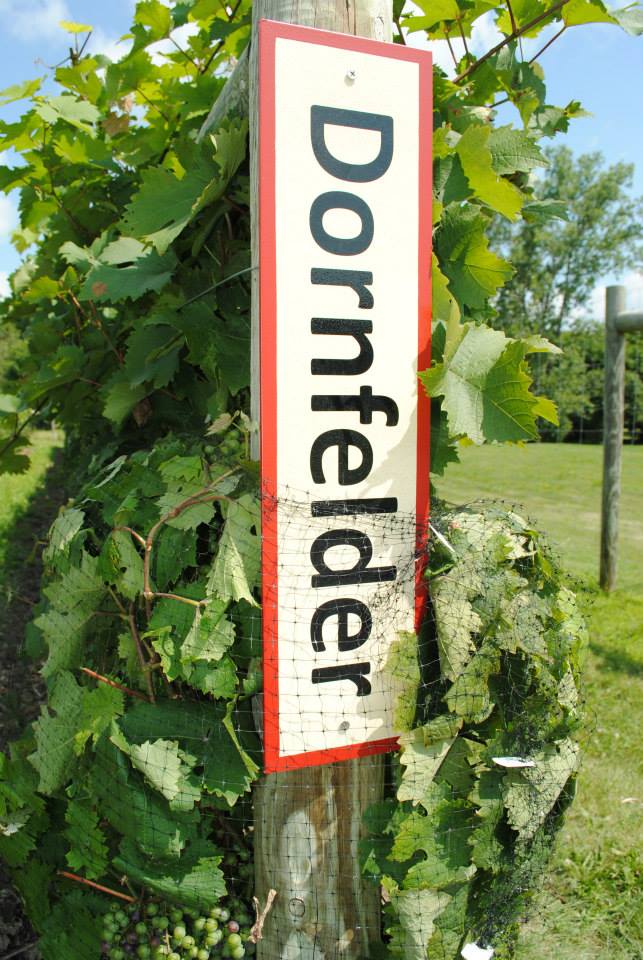 Nancy, you worked for Gallo, a big winery, and then you decided to develop your own winery. How did you make that transition?
Nancy, you worked for Gallo, a big winery, and then you decided to develop your own winery. How did you make that transition?
I actually got my training at UC Davis working with Carole Meredith, and I received my PhD with her, working on grape breeding and grape physiology. I was hired directly from my PhD program to work for Gallo in the mid-'90s. But once I was on board, I worked on everything from dealing with winery issues and problems in the winemaking process, to things that were going on in the vineyards. It was really a great learning experience for me. I was with them for 12 years, and grew my career with them, starting with working in the vineyards and working with the winemakers. But any time you do a pretty good job, you are given more tasks. And as I started to get promoted, before long I was not working in the vineyards anymore, or working on the projects at hand, I was delegating all of those things to my staff. At the end of my 12-year career, I ended up more focused on managing people and delegating tasks, dealing with money, working on budgets, and going to budget meetings. I don't know, I just kind of felt like I lost touch with the whole reason I started working with grapes and wine. And I really wanted to get back to basics.
It was really amazing to have a career with Gallo, but I really wanted something personal. And so Michael and I started seriously looking for a project where we could use our own savings and start our own winery. But we didn’t want to have to bring in a bunch of big investors. We were looking for a reasonably sized piece of property, and by looking around the country, the Finger Lakes was a great opportunity. Sometimes timing is everything! We were able to purchase it with our own savings and it was a large enough piece of property by my standards, 34 acres. And, with our savings, we were actually able to get the vineyard planted before we had to bring in any kind of support from a local bank.
Tell us a little bit about Teroldego.
Yes, we grow Teroldego here in the Finger Lakes. I think we're probably the first people to be growing Teroldego here. I actually worked with Teroldego in my old life at Gallo. One of the projects that I was responsible for was helping them to prepare for global warming. They looked at a lot of unusual varieties back in the '90s that they felt would have potential for the California industry in an increasingly warmer, drier climate. I established a research vineyard with a number of unusual varieties. I looked at a number of different varietals in the '90s, which would have been unusual: Touriga Francesa, Tempranillo, Tinta Cão, Aleatico, Bonarda, Teroldego, Dornfelder, Blaufränkisch, Lagrein to name of few….
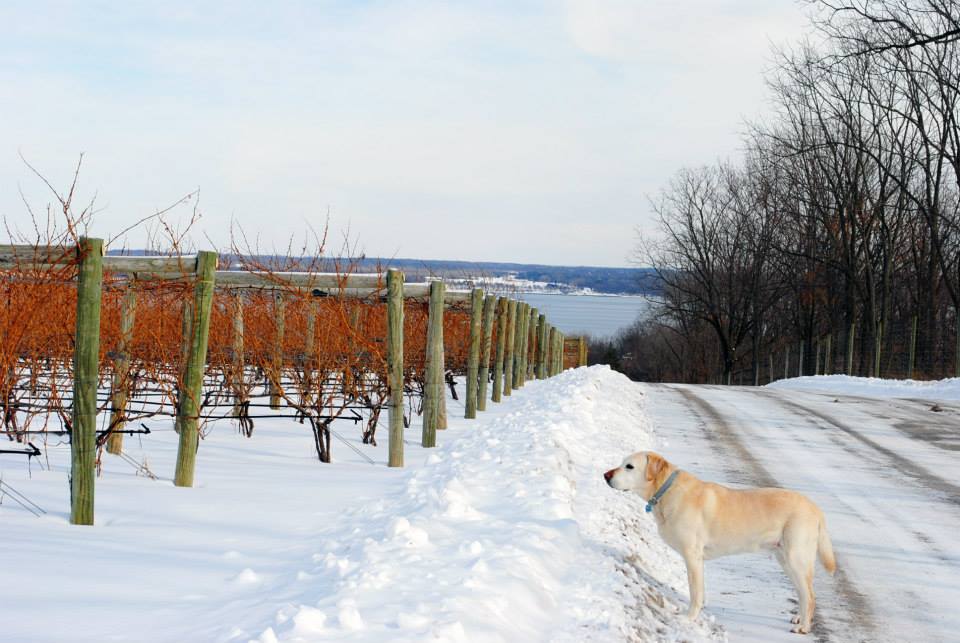
Obviously we grew and produced wine from these varieties, and some of them had a lot of potential for the Central Valley. Now when you buy wines that were produced in the Central Valley, there are a lot of examples of these varieties in the background of these wines, if not as pure varietal wines from that area. Additionally during this process, we found some varieties weren't quite working for the Central Valley, but you could tell that they might have potential in a cool growing region. So when we first decided to develop the vineyard in the Finger Lakes, those varieties came to mind. And those varieties would be Teroldego, Lagrein, Dornfelder and Blaufränkisch.
When we looked at them in California, they were not really interesting as pure varieties. They were a bit soft, lower acid, higher pH—just not interesting as a stand alone variety, but maybe as a blender. You could tell by the areas where they were grown in Europe, Teroldego and Lagrein were from the Alto Aldige area of the Italian Alps which are high alpine vineyards. There's potential for those cool varieties in a cool area like the Finger Lakes which has similar growing conditions. When we initially started designing this vineyard, our intent was to plant some plots of these varieties to see how they would work. And we've been really pleased with the outcome. Now we're working with Blaufränkisch and we've got three different planting areas that we're working on for Blaufränkisch.
Our first production of Teroldego was from 2008 when they were very young vines. Any young vines usually make a rather awkward wine. The vines themselves are a bit awkward, they're going through their premature pimply-faced teenager phase where they're not completely balanced, the fruit's got a little bit higher acid at full ripeness. In those cases they make perfect cuvees for sparkling wine, and that's actually the first thing I made with Teroldego from the property, sparkling Teroldego, which I thought was a slam dunk as far as what to do with that young wine with a little bit different background than what would be appropriate for a still wine. And I was really surprised how many other people agreed with me, because the wine actually turned out to be pretty popular. These vines have been on the property since 2006, and we're now working with fully mature vines. I feel they're making solid, consistent wines year after year. So we're pretty happy with them.
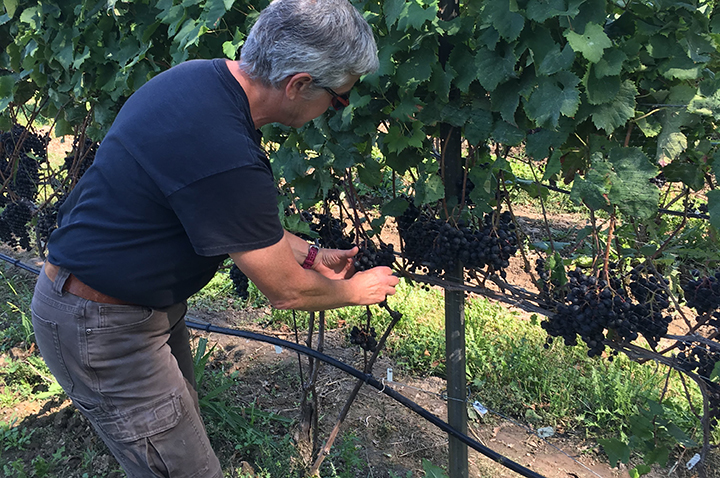
Actually, there is a producer, Elizabeth Foradori, in the Trentino area, who I think is a kind of a rockstar, because if it wasn't for her, I don't think we would even have Teroldego. I know that there was a period when that region was thinking about removing a lot of their heritage varieties, Teroldego, Lagrein, Schiava.
All of these varieties that have been in the ground and worked with for so long, they were planning on removing them all. I know that Foradori singlehandedly was instrumental in saving these varietals. She basically collected all of the plant material she could find of the different versions of Teroldego, and provided it to the institute there in Trentino. Now that’s where the plant material is being maintained for other people to use in the future. So if it wasn't for her, we probably wouldn't have Teroldego.
How would you describe Teroldego as a grape?
Teroldego is a really interesting grape to work with in the vineyard. They produce clusters that are so big and beautiful that they look almost like table grapes. They’re huge clusters with long tails, big shoulders, and large berries. But the clusters are usually fairly loose, so that means they do very well in a more humid environment, which we have at times in the Finger Lakes. They also have very thick skins, so they’re very color extractive and just a very big profile for fruit, and then in transition to wine.
And if you were to describe the taste of Teroldego to somebody who hadn't tasted it before, how would you describe that taste?
I've had to actually do that. Yeah, I've actually had to describe to people what the profile of Teroldego is in comparison to more well-known varieties. And I like to say, I think of it as a cross between a cool-climate Grenache, and a cool-climate Zinfandel, because it's got that brambly berry ... even maybe a little bit of a minty characteristic that you would see in a combination of those two varieties. And there's still a nice kind of peppery spice, and a very good acid backbone.
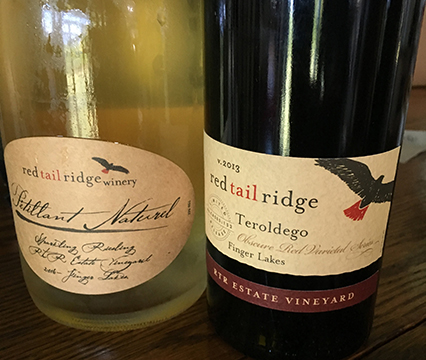 Tell us about the terroir in the Finger Lakes. What makes this a great region to grow grapes?
Tell us about the terroir in the Finger Lakes. What makes this a great region to grow grapes?
Growing grapes and making wine in the Finger Lakes is a very unique experience domestically. I don't think there's any other growing region in the United States that can grow grapes and make wine of the same nature or similar nature to what we do in the Finger Lakes. When you put Finger Lakes wines into a tasting with other domestic wines—West Coast wines—it’s a completely different profile. And really, that's what I like about the Finger Lakes. There's definitely a distinct personality and terroir in this region.
The growing conditions of the Finger Lakes, the terroir of the Finger Lakes? Well, you have to go back to how this area was formed, and that has to do with glacial carving. If you look at the lakes themselves, it appears as though someone has taken their fingers and carved them into the surface. That's all from glacial activity. And the coolest thing about glaciers is that the way they produce land is very random. You get a lot of randomness in the depth of the profile as well as the composition depending on how deeply it is carved. As a result, you can have two vineyards next to each other, but are distinctly different as far as their terroir is concerned.
What sort of soils do you have in the Finger Lakes?
I think the biggest influence on the soil is glacial. At one point, in order to grow Vitis vinifera, you have to be in close proximity, and also elevation to the lakes, because the lakes provide a warming influence on the growing conditions. Our soils are obviously a product of the glacial action, because when the glacial activity occurred, the vineyards were under water for a long period of time. All of the vineyards around here have a large component of shale, glacial till and siltstone. It's that profile that distinctly influences the wines themselves.
What is your philosophy of winemaking and of viticulture?
My philosophy is focused heavily on what happens in the vineyard. And as a winemaker, I actually spend quite a bit of time in the vineyard during the growingseason. I am out there tasting and evaluating what's going on in the vineyard.
Needless to say, I have a really good relationship with my grower, because he's my husband. I believe all the effort has to take place in the vineyard, and then once the fruit comes in, since you've been out in the vineyard as a winemaker, you know what to expect and there are no surprises. You're deciding when the harvest should take place, and when the fruit arrives on the crush pad because you already know that fruit really well. You have a personal relationship with that fruit, and in many ways you've already figured out what you will be doing with that fruit moving forward. I guess my philosophy is that the effort is up front, and then very little effort should go into the actual winemaking process. We are stewards of the fruit coming in, but really, hopefully, the fruit is of such quality and good condition that very little effort needs to be undertaken in the cellar to make a great wine.
Take a 360-degree virtual reality tour of the Red Tail Ridge winery. This experience only works in certain browsers including Google Chrome. You can also experience the VR tour directly on Youtube.
How have the wines of the Finger Lakes evolved since 2004?
More and more people are becoming very serious about growing vinifera and growing it properly, making premium wines, making dry, premium wines with distinction—with Finger Lakes distinction—qualities that are very representative of the Finger Lakes that really stand out as a unique wine style. And what has really changed since we have been here is simply that more and more people have started to take it very seriously. There’s a lot more national and international recognition of the effort that's taking place here.
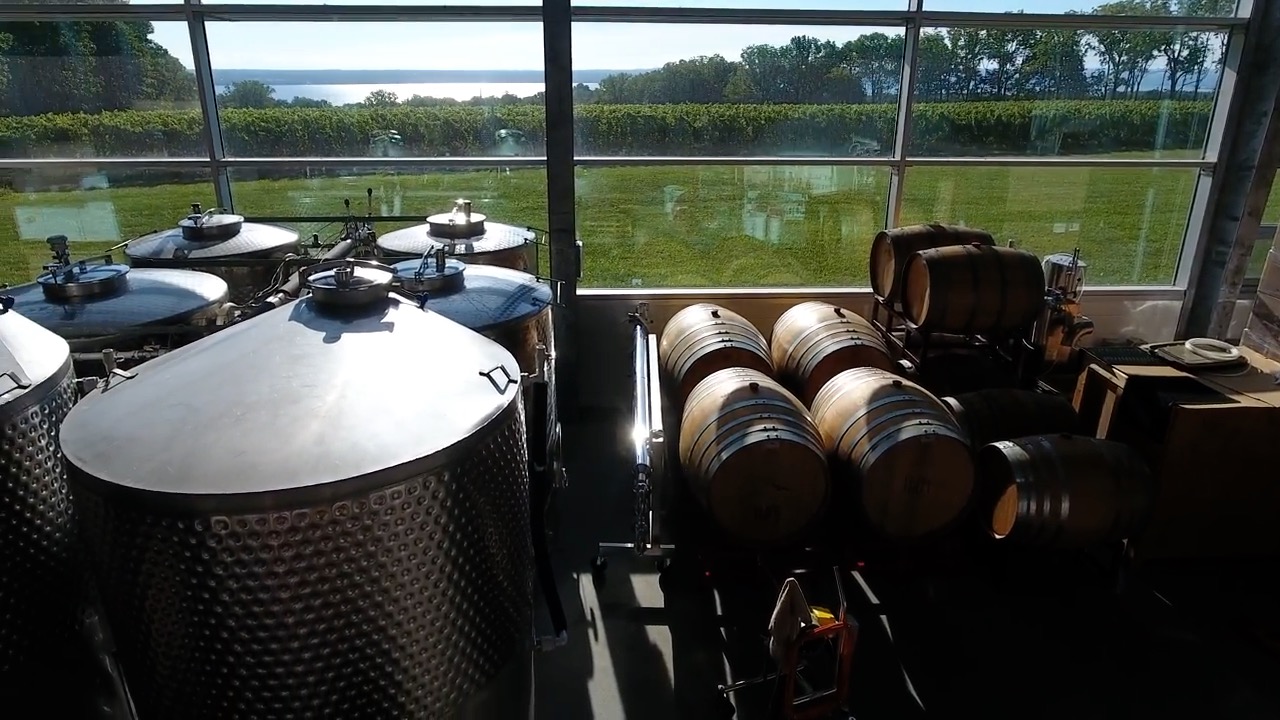 Nancy, in terms of your viticultural practices, you're starting to use some sprays which aren't classified organic, but they're using organic material. They're rather new and innovative. Tell us about them.
Nancy, in terms of your viticultural practices, you're starting to use some sprays which aren't classified organic, but they're using organic material. They're rather new and innovative. Tell us about them.
There are a number of us in the Finger Lakes who are seriously attempting to improve the way we manage our vineyards. And it's true, we're not certified organic, nor are we certified biodynamic, but we're doing the best we can to have a minimal touch in the vineyard. So we practice integrated pest management. We do things in a sustainable manner.
Fortunately because of my more technical background, I'm also very familiar with a lot of the newer materials that are available, and some of these materials are very noninvasive. Some of the materials that we're using now are actually plant-based extracts, they've come from plants themselves. Other materials that we're using now are actually compounds that were isolated from naturally-occurring soil microorganisms that produce inhibitory compounds so they can out-compete other microorganisms in their own environment. We're using purified compounds from those extractions.
We're looking for new approaches that actually are less invasive. We're looking for things that are just being developed and discovered now from naturally-occurring organisms, and we're just trying to utilize these naturally-occurring phenomenon as control components for our vineyards.
Even using copper, which is the traditional method that organic producers use, can have a very negative effect on the soil.
Right. Copper has been around forever, and copper is a naturally-occurring element, and it's certified for organic and for biodynamic applications. However, copper is also really toxic, and once you spray it in your vineyard, it's not going away, the residue continues to collect, and it will end up collecting in your soil profile. Once it reaches a certain point, it becomes very difficult to have the kind of population or microbial ecology that you want in your soils. You want healthy soil with really diverse soil microorganisms. Copper can be really deleterious to that. I think people who are working with biodynamic and organic treatments are also trying to find new ways of control without using large amounts of copper. But here at this vineyard, Michael and I have made the decision that we're not using copper. So we're looking at more innovative practices to solve our disease problems and not relying on copper.














